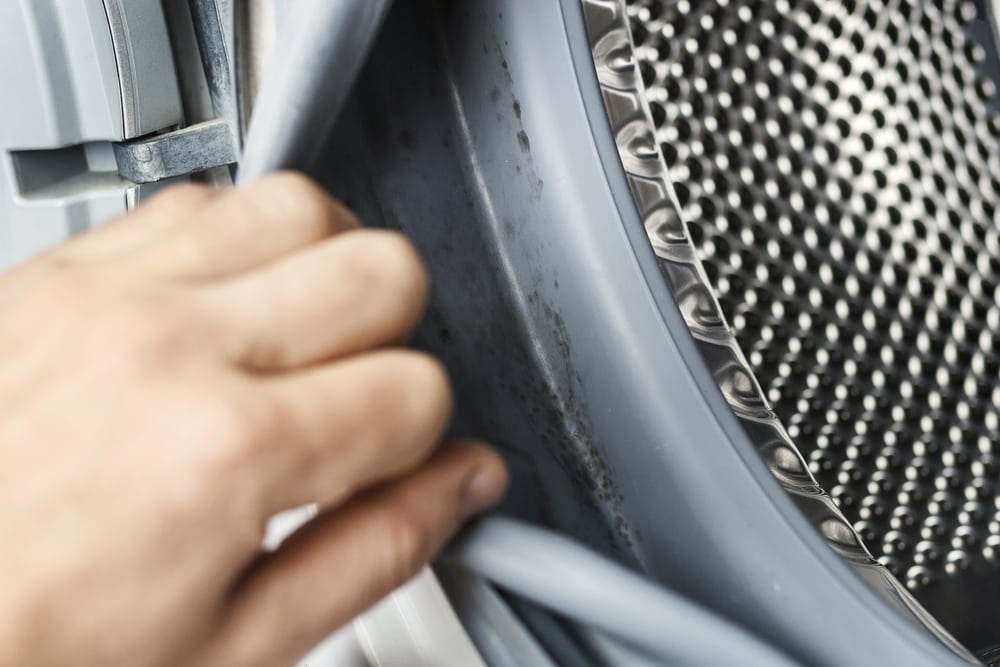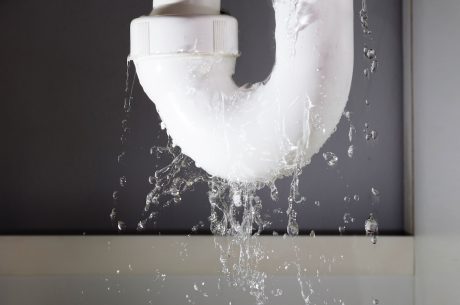Washing machine mold, which is typically found on the rubber gasket of front-loading machines, is a common household problem. This kind of mold is caused by neglecting to clean the machine and/or using it improperly. But don’t worry. In this article, you’re going to learn how to remove mold from washing machines.
Just because a washing machine cleans laundry, this doesn’t mean it cleans itself. Mold feeds on the moisture and detergent residue that the machine produces. With this in mind, here’s how to remove mold from washing machines and how to prevent it.
How to Remove Mold from Washing Machines
- First, create a mold removal solution. You can either use a
commercial mildew cleaner or make your own mixture. Here are several homemade
cleaners you can create:
- 2 cups water, ½ cup hydrogen peroxide, and ¼ cup lemon juice — hydrogen peroxide and lemon juice are effective cleaners that combat mold and inhibit its growth.
- 2 cups water, ¼ cup lemon juice, and ½ cup distilled white vinegar — white vinegar is an all-around cleaner that you can use as an alternative to hydrogen peroxide.
- 1-part vinegar and 4 parts water — just vinegar and water can do the trick if the mold growth in your washer gasket is in sparse amounts.
- 1-part bleach and 4 parts water — use bleach if the above-mentioned natural cleaners don’t work for you.
- Add your preferred cleaner into a spray bottle and mist the solution over the mold on the gasket. Put on rubber gloves to protect your hands and a dust mask to avoid inhaling mold spores. Then use a cloth or towel to clean the gasket thoroughly. For persistent spots, let the solution sit for a few minutes and use an old toothbrush.
- Once you’ve cleaned the rubber seal, it’s time to purify the drum and hoses. Run a cycle on the hottest setting with your preferred mold remover; doing this will rinse away any mold traces and odors from your washer drum and hoses.
- If a musty smell persists, there may be mold growing behind the washer drum. Call the manufacturer (if your machine is under warranty) or a qualified repair person. They can diagnose your washer and fix the mold problem.
How to Prevent Mold in Washing Machines
- Use only the right detergent. If you have a High-Efficiency (HE) washer, use High-Efficiency detergent. Non-HE detergent leaves behind too many suds that promote mold growth. Use only the recommended amount of detergent for the same reason.
- Leave the door open after each wash to allow moisture inside the machine to escape. Doing so prevents the formation of a damp environment in which mold can grow.
- Remove wet clothes immediately after a wash. Not only does this prevent moisture and mold buildup, but it also prevents your clothes from smelling musty.
- Wipe the door gasket with your mildew cleaner regularly. Do so at least once a week to eliminate moisture and detergent residue that promotes mold growth.
- Use a dehumidifier where you keep the washer if the area is humid. Humidity from outside the machine may contribute to the mold inside it, so make sure to fix the water or humidity problem. Set up a dehumidifier in the room.
For water damage restoration, contact the PuroClean experts!
Follow these tips on how to remove mold from washing machines to eliminate the health risks associated with mold in your home. But, besides mold growth, washing machines are prone to other problems like overflowing. Learn what to do if your washing machine overflows. Take a look at how to prevent water damage from other appliances as well.
Even with all measures in places, water damage from washing machines can still occur. If that happens to you, know that PuroClean is ready to come to your property’s rescue. For flood water damage repair and water removal services, contact your local PuroClean office.




 PuroClean Restoration Services
PuroClean Restoration Services